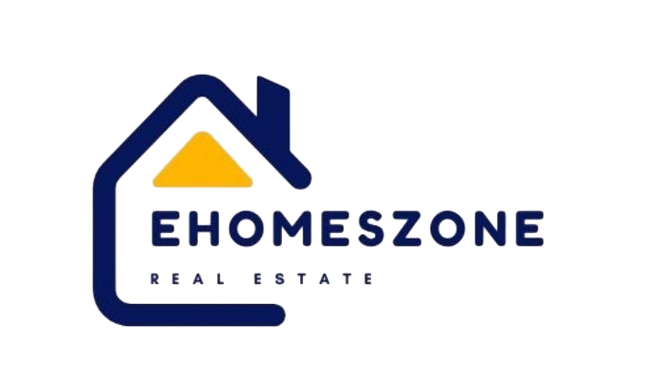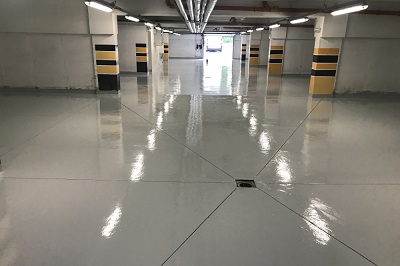Because of its remarkable durability and beauty, epoxy flooring is growing in popularity in home and commercial settings. As interior design evolves, epoxy floors are no longer considered valuable surfaces limited to garages or warehouses. They can seamlessly transition from ruggedness in industrial settings to elegance in modern homes, showcasing their versatility. Whether you are contemplating epoxy flooring in Cincinnati Ohio, or another location, understanding its capabilities can significantly enhance your space’s aesthetic and functional aspects.
Epoxy flooring is a durable, aesthetically pleasing surface that combines resin and hardeners, offering a virtually indestructible finish. Its versatility in color, pattern, and finish makes it a popular choice for its durability and creative potential. This article explores epoxy flooring types, design possibilities, installation tips, and future trends.
Types of Epoxy Flooring
Understanding the different types of epoxy floors is crucial for making an informed decision. Self-leveling epoxy is known for its seamless appearance and ability to cover imperfections, making it ideal for commercial facilities like showrooms or warehouses. Epoxy terrazzo, a customizable type, uses colored chips to create unique patterns, mimicking expensive finishes like marble, making it suitable for public spaces like airports and schools. Metallic epoxy floors, incorporating metallic pigments, offer a dazzling, three-dimensional appearance, making them ideal for settings with visual impact and luxury interiors.
Creative Design Ideas
Epoxy flooring offers a unique and personalization option, allowing for the incorporation of vibrant colors, geometric patterns, and embedded images or logos. This creative tool can be used in retail environments to create a unique customer experience. At the same time, in residential settings, it can mimic natural materials without the cost or maintenance associated with traditional flooring. With numerous options, epoxy floors can transform from simple surfaces to bold focal points, allowing for a more personal and artistic expression.
Installation Best Practices
Installing epoxy flooring is intricate and demands close attention to detail. The substrate’s condition and preparation are crucial for its success. The first step is to clean and repair any existing damage, ensuring a clean, sound surface for proper epoxy adhesion. The curing process is also crucial, as each layer of epoxy needs sufficient time to form a strong bond, ensuring durability and a flawless finish. Hiring seasoned experts for big commercial installations is advised since rushing the drying process might result in flaws.
Maintenance and Durability
Epoxy flooring’s exceptional longevity makes it stand out; it can endure the deterioration caused by intense foot traffic, vehicle movement, and even chemical spills. However, little but frequent care is needed to keep it in perfect shape and increase its longevity. The floor can maintain its finest appearance with regular sweeping and sporadic cleaning with a light detergent.
Avoiding harsh cleaning agents is crucial, as these can damage the epoxy’s finish over time. Additionally, using protective pads under furniture and cleaning up spills promptly will help prevent scratches and staining. Implementing these simple maintenance strategies will ensure your epoxy floor remains as stunning as the day it was installed, potentially lasting decades without losing its aesthetic appeal.
Environmental Considerations
In today’s environmentally-conscious world, the ecological footprint of building materials is a significant concern. Fortunately, epoxy flooring offers ways to contribute to sustainability. Choosing water-based epoxies or low-volatile organic compounds (VOCs) can drastically reduce emissions during installation and throughout the flooring’s life.
Moreover, the longevity of epoxy flooring reduces the need for frequent replacements, minimizing waste. Businesses and homeowners can maintain their eco-friendly objectives by opting for sustainable practices and materials in epoxy installation, balancing functionality and environmental responsibility.
Epoxy Flooring in Various Settings
Epoxy flooring has unique qualities that make it perfect for commercial, residential, and industrial situations. It is also adaptable and appropriate for a variety of contexts. It can handle heavy machinery, resist stains and chemicals, and provide a polished appearance. In restaurants and boutiques, epoxy floors can withstand high foot traffic, while in residential spaces, it offers a cost-effective alternative to luxury flooring options without compromising aesthetics or durability.
Future Trends in Epoxy Flooring
The field of epoxy flooring continues to innovate, led by technological advancements and shifting consumer preferences. UV-resistant coatings are becoming more prevalent, offering enhanced protection against sunlight and ensuring the floor’s vibrant colors and finish longevity.
Developing more eco-conscious products is also being explored as sustainability becomes a priority. With intelligent technologies, we may expect flooring that provides durability, design, interactive features, and increased efficiency. Stay informed about these emerging trends to keep your floors at the forefront of innovation.










Find Us on Socials